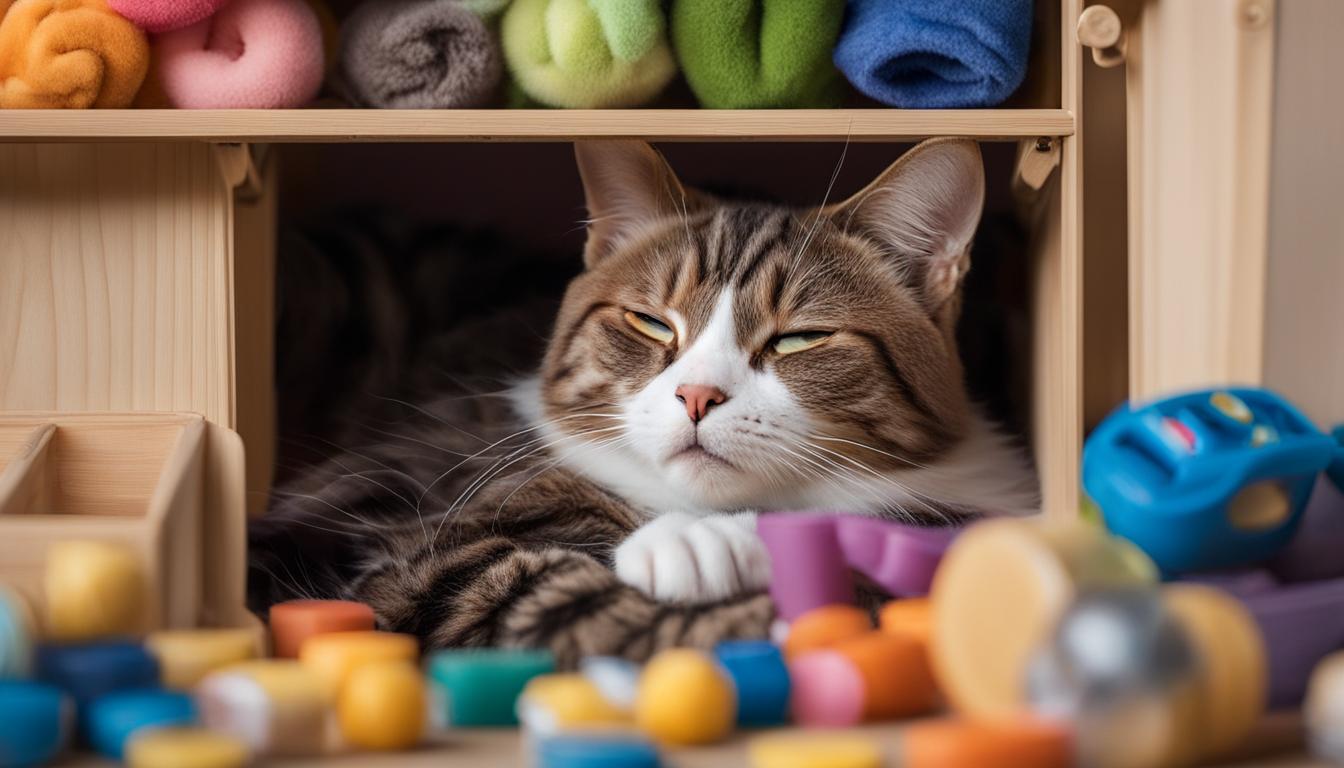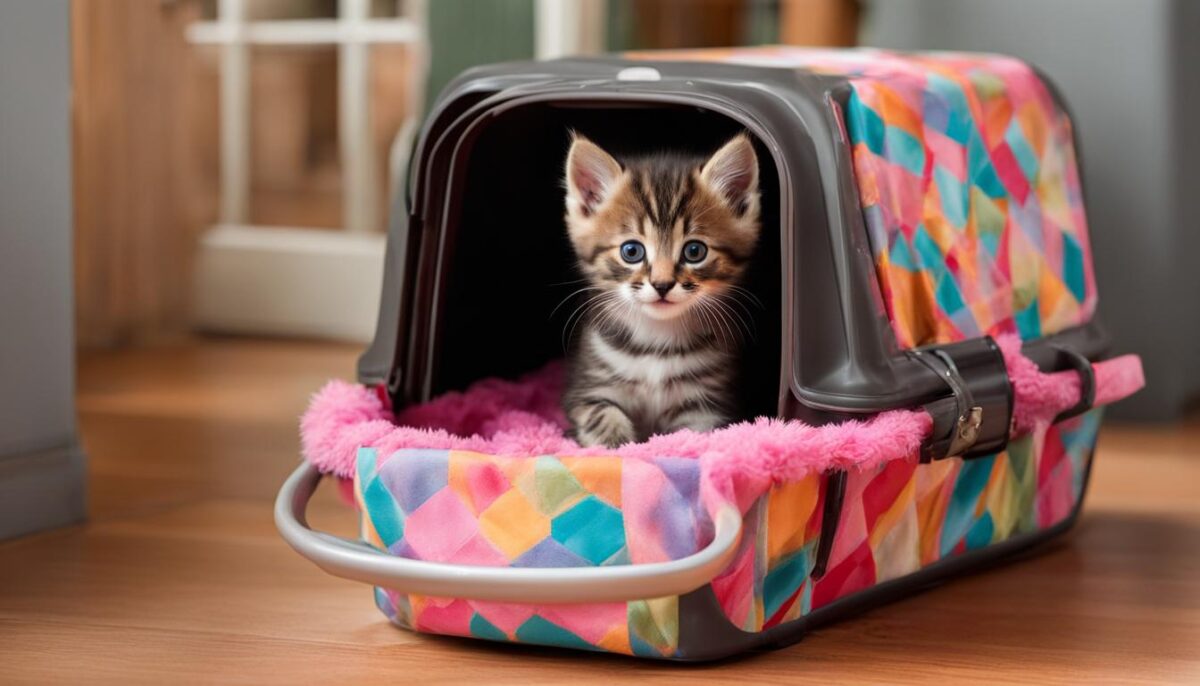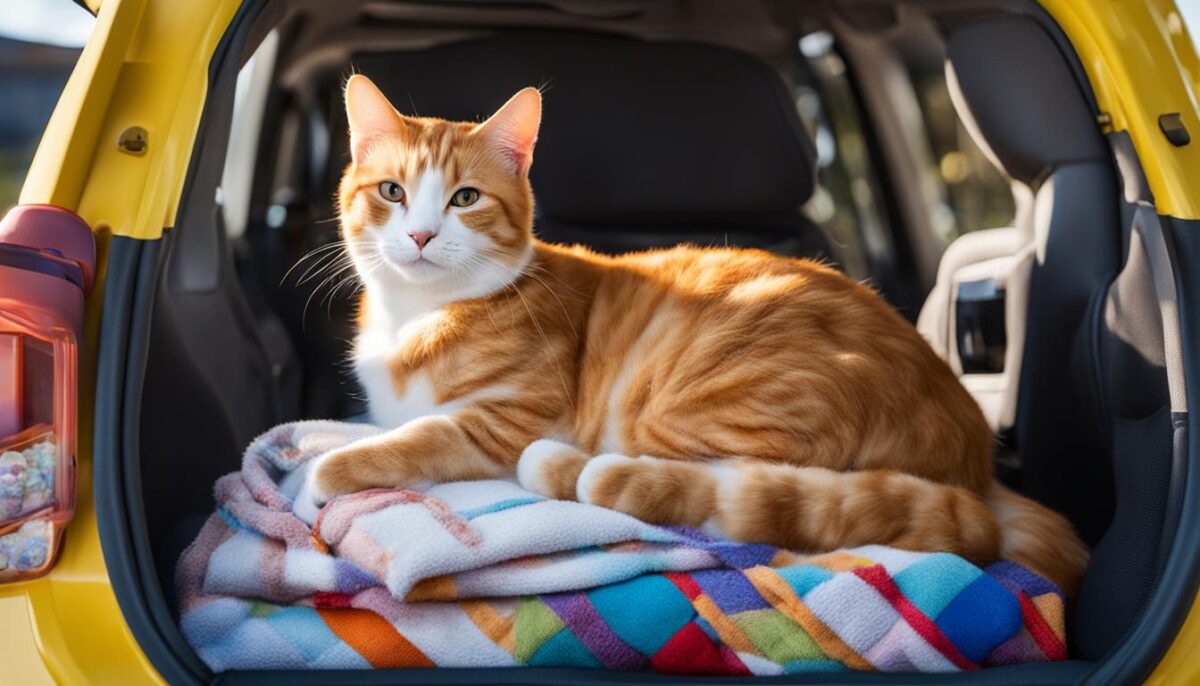Do you have a furry little friend at home? You know, a cute cat that you love a lot? If you do, you will want your cat to feel happy and safe all the time, right? One thing that can help is teaching your cat to like their carrier. Cats need to travel sometimes, like when they go to the vet. If your cat feels good about their carrier, everything is much easier!
Let’s make the carrier a cozy spot. You can put yummy treats inside or spray a special scent called Feliway to help them relax. Start slowly so your cat does not get scared. It’s like learning a new game – step by step. We want your cat to feel very safe when they hop into the carrier. This might take a little time, but it is worth it. With these simple cat carrier training tips, you can reduce your cat stress and help them feel better about their carrier.
Key Takeaways
- Teach your cat the carrier is a fun and safe place.
- Give treats to help your cat like the carrier more.
- Use Feliway scent to make your cat feel calm.
- Go slow and patient with carrier training tips.
- Remember, happy cat, easy travel!
The Importance of Carrier Training for Your Cat’s Well-Being
Traveling or visiting the vet can be scary for your cat. They might feel trapped or scared in a carrier. Think of how you feel when something new or big happens. It’s sort of the same for your furry friend. But if you teach your cat to like their carrier, these trips can be stress-free. This helps your kitty stay calm, happy, and healthy! Let’s find out why this is so important.
Understanding Your Cat’s Stress with Travel and Confinement
When cats don’t know their carrier, they can get very worried. This worry is called cat carrier anxiety. It’s like feeling super nervous on the first day of school. When a cat knows their carrier, they feel safer. This makes going places easier and less scary for both of you.
The Health Benefits of Regular Veterinary Visits
You go to the doctor to stay healthy, right? Well, cats need check-ups too. These visits help prevent what we call feline chronic disease. That’s when a kitty has a sickness for a very long time. Seeing a doctor regularly keeps your cat feeling their best.
Making Vet Examinations Easier with a Trained Cat
When your cat likes their carrier, vet visits can be way easier. Imagine a cat that doesn’t want to leave their carrier. The vet might not be able to check them properly. But if your cat walks into their carrier without worry, the vet can help them quickly and easily. This is part of stress-free travel for every trip you make.
Choosing the Right Carrier for Comfort and Ease
When it’s time for pet travel, you want to make sure your kitty feels safe and happy. A top-loading cat carrier is a great choice! It’s easier to get your cat in and out, and if you have to see the vet, they can peek inside without moving your cat too much. This is nicer for your cat because they can stay in their comfy spot.
Imagine a comfortable cat carrier as a little house for your pet. You want it to be snug and warm. Find a sunny place in your home and put the carrier there. Fill it with soft blankets or a pillow. This way, your cat can nap and play there, and they’ll start to think, “Hey, this place is pretty nice!”
- Look for cozy bedding to make the carrier soft.
- Choose a spot where your cat likes to hang out.
- Put treats inside so your cat loves their new carrier home.
Remember, when you and your cat travel, you both want it to be a good time. A comfy carrier makes trips much better. Happy travels!
Introducing Your Cat to the Carrier
Guess what? Helping your cat get comfy with their carrier can be fun! A carrier isn’t just for trips; it can be a happy place for your kitty, too. Getting them to like their carrier early helps a lot. With some smart moves, your cat will think their carrier is a cool spot to chill and not just a ride to the vet.
Early Introduction: A Playful Approach
Tiny kittens love to play! So, start kitten carrier training by making the carrier a game. Leave the door open and toss toys or treats inside. Every time your kitten hops in to explore, give a big cheer like you just won the big game. They’ll start thinking: “Hey, this carrier place is pretty awesome!”
Creating Positive Associations with the Carrier
Here’s a tip: Want your fuzzy friend to love their carrier? Try encouraging cat carrier use by making it super inviting. How? Toss in a favorite blanket or a shirt that smells like you. Then add some treats or food. Each time they go in, it’s party time! High-fives, treats, and lots of “good kitty” cheers help a ton.
Gently Increasing the Time Spent Inside the Carrier
Now, let’s talk about building carrier familiarity. Start by closing the door for just a moment while your cat noms on a tasty treat. Then, let them out to play again. Next time, close it a bit longer, always following up with treats and love. Slowly, but surely, your pal will get the hang of it and think, “This carrier thing? It’s not so bad after all!”
| Step | What to Do | Why It’s Good for Your Cat |
|---|---|---|
| 1 | Leave the carrier out | Makes the carrier part of your cat’s world |
| 2 | Playtime with the carrier | Turns the carrier into a fun, safe space |
| 3 | Add treats and warm bedding | Associates the carrier with comfort and snacks |
| 4 | Practice closing the door | Helps your cat get used to being inside with no stress |
| 5 | Short trips around the house or block | Prepares them for longer journeys without worry |
Getting a Cat Used to a Carrier with Positive Reinforcement
Hey there! You want to know a secret to help your cat like their carrier? It’s called positive reinforcement for cats. What’s that, you ask? Well, it means giving your furry friend treats and nice words to make them feel good. Let’s talk about how you can use it for feline carrier training so trips become stress-free cat travel!
First, put some yummy snacks in the carrier. When your cat goes in to eat, say things like “Good kitty!” and give them pets. This tells them they’re doing a fantastic job. Stick around while your cat is in the carrier. They like having you near, it makes them feel less alone.
Patience is key – take things slow and keep the vibes happy. If you do this often, your cat will get the idea that the carrier is not so bad.
Here’s a little table that might help you remember what to do:
| Step | What To Do | How It Helps |
|---|---|---|
| 1 | Place treats inside the carrier | Makes the carrier a place for yummy surprises |
| 2 | Use loving words and pet your cat | Builds a connection between happy times and the carrier |
| 3 | Stay close by the carrier | Offers comfort and reduces kitty’s stress |
| 4 | Keep it up over time | Helps your cat get used to the carrier as their safe spot |
So, that’s it! Use these tips and take it one step at a time. Your cat will realize that the carrier means adventure and fun with you. And that’s when you know you’ve nailed feline carrier training!
Remember, when your cat does great, you both win. They get a cozy trip, you get a happy cat, and going places together becomes a piece of cake!
Conclusion
As we wrap up our guide on cat carrier training, it’s essential to understand that each furry friend is unique. They all learn at their own pace, and that’s perfectly okay! Remembering to be patient with your cat’s progress is essential for successful cat carrier training. Remember, if you’re kind, this will help your cat feel safe and understand that the carrier is a friend, not something scary.
Recognizing Individual Progress and Patience
Every step your cat takes towards feeling comfortable with their carrier is an achievement worth acknowledging. Whether it takes days or weeks for them to be at ease, recognizing your cat’s comfort level is crucial. Patience is your best buddy in this journey. Some cats might jump right in and curl up, while others may take a little longer to trust the carrier. Either way, you’re doing great by giving them the time they need.
Celebrating the Milestones of Carrier Training
Let’s give a round of applause for all those small but mighty moments in carrier training achievements! When your cat first walks into the carrier on their own or snuggles inside during a car trip, these are big deals. Each time they show they feel safe, you know you’re on the right path. Keep up the good work, and soon, those vet trips will be a breeze for both you and your fluffy pal.
FAQ
How do I reduce cat stress during carrier training?
To reduce your cat’s stress while carrier training, start by introducing the carrier slowly and creating positive associations. Use treats, soft bedding, and a calm environment. Incorporating a familiar scent like Feliway can also help your cat relax. Always move at your cat’s pace and offer praise and affection for their bravery.
What are some tips for acclimating my feline to their carrier?
Start by placing the carrier in a space where your cat spends a lot of time and make it inviting with a comfy blanket. Encourage your cat to explore the carrier on their own by placing treats or toys inside. Gradually extend the time your cat spends in the carrier, and remember to praise them for their progress.
Why is it important to get my cat accustomed to their carrier?
Acclimating your cat to their carrier can significantly lower their anxiety during travel and make vet visits less stressful. A cat that’s comfortable with their carrier is easier to transport and handle, which is beneficial for their overall health and well-being, aiding in feline chronic disease prevention.
How can regular veterinary visits contribute to my cat’s health?
Regular veterinary visits are crucial for early detection and management of potential health issues in cats. A cat that is comfortable in their carrier will experience less stress when travelling, making it easier to maintain a schedule of routine check-ups and ensure your feline’s health is monitored closely.
What features should I look for in a comfortable cat carrier?
Look for a carrier that’s sturdy, well-ventilated, and easy to carry. A top-loading cat carrier is especially beneficial as it allows for easier access to your pet and can reduce stress during veterinary examinations. Ensure the carrier is spacious enough for your cat to stand, turn around, and lie down comfortably.
At what age should I start kitten carrier training?
It’s ideal to start carrier training as early as possible when your cat is still a kitten. Kittens are generally more adaptable and will learn to see their carrier as a regular part of their environment, making it easier to transport them when necessary.
How can I create positive associations with the carrier for my cat?
You can create positive associations by frequently placing your cat’s favorite treats, meals, or toys inside the carrier. Speak in a soothing voice and provide plenty of affection to associate the carrier with enjoyable experiences. This technique of positive reinforcement for cats can help your feline build a liking for the carrier over time.
How long can it take for my cat to get used to the carrier?
Each cat is unique, and the time it takes to get used to a carrier will vary. Some may adjust within a few days, while others might take several weeks or more. Patience is key, and it’s important to go at your cat’s pace and celebrate even the small successes to encourage progress.
Can cat carrier training help with stress-free travel?
Absolutely! Training your cat to be comfortable with their carrier can lead to stress-free travel. A calm cat will have an easier time on car rides or trips to the vet, leading to happier journeys for both you and your pet.
What are some milestones I should celebrate during carrier training?
Celebrate each step your cat takes towards becoming comfortable with the carrier. This includes the first time they enter on their own, when they relax inside for extended periods, and when they remain calm on short car trips. Acknowledging these achievements will boost your cat’s confidence and reinforce positive behavior.


